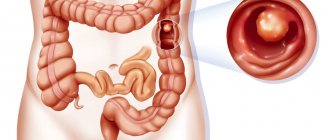- What stage of alcoholism is it typical for?
- Clinical variants Psychopathological variant of AAS
- Neurovegetative variant of AAS
- Cerebral
- Visceral or somatic variant of AAS
- Stages of withdrawal syndrome
- How long does it last?
- How to relieve withdrawal symptoms?
- Treatment
- Quick cupping
- Help at home
- Drug treatment in hospital
- AAS and hangover syndrome - the difference
Attention!
Drug use causes irreparable harm to health and poses a danger to life!
Alcohol withdrawal syndrome (AAS) is a pathological condition characterized by the development of a complex of psychoneurological and somatovegetative disorders. Occurs against the background of cessation or sharp limitation of long-term alcohol abuse.
What stage of alcoholism is it typical for?
Withdrawal symptoms begin to appear in the second stage of addiction and are necessarily present in the third. It is possible to develop different symptom complexes, which is largely due to the characteristics of a particular person. Up to 15% of patients with severe AAS die.
Clinical options
Withdrawal syndrome usually includes two groups of changes. The first includes the actual pathological attraction to alcohol. But the basis of the clinical picture is made up of various psychophysical disorders, individual for each person.
Psychopathological variant of AAS
When cognitive-behavioral disorders dominate, the development of a psychopathological variant of withdrawal syndrome is confirmed. It has the following signs:
- the appearance of thoughts of suicide;
- behavior aimed at causing harm to oneself (less often, to others);
- anxiety;
- irritability;
- aggression;
- pathological agitation (agitation);
- feeling overwhelmed;
- fear to the point of panic;
- critically reduced mood background – dysphoria;
- guilt;
- sleep disturbances, usually complete insomnia;
- illusions;
- hallucinations – auditory, visual, hypnagogic.
Victims may remain in a half-asleep state, having difficulty understanding the difference between dreams and their surroundings. Disorientation in what is happening and in one’s personality stands out.
This type of AAS is associated with a high risk of developing acute alcoholic psychosis. In severe cases, violations reach the point of delirium - “delirium tremens”.
Neurovegetative variant of AAS
In most cases, neurovegetative type symptoms appear:
- asthenia – loss of the ability for prolonged mental and physical stress, combined with severe weakness, unstable mood, poor tolerance to external stimuli;
- tremor - trembling of different parts of the body, intensifies in a cold room;
- lethargy;
- Some patients have increased body temperature
- redness/pallor of certain areas of the skin;
- fluctuations in blood pressure;
- rapid pulse - tachycardia more than 90-110 beats/min;
- dry mouth;
- heart rhythm disturbances;
- sweating – hyperhidrosis;
- swelling of the face;
- decreased appetite;
- emotional swings;
- exhaustibility;
- hot temper;
- involuntary contraction of facial muscles;
- twitching of fingers and toes;
- muscle weakness;
- unsteadiness when walking or trying to stand;
- thirst;
- feeling of lack of air.
If severe sweating is combined with diarrhea, you should be wary of dehydration with water-electrolyte imbalance. Profuse hyperhidrosis often precedes the appearance of delirium (“squirrel”).
Neurovegetative disorders are a kind of “base” to which other personal symptoms are added. In approximately 5-8% of cases, after prolonged binges, convulsive (epileptiform seizures) are added to withdrawal symptoms.
Detoxification
3 000 ₽
Calling a narcologist to your home
3 000 ₽
Cerebral
Long-term drinking of alcohol leads to damage to the central nervous system. In case of severe damage, the following symptoms are added to the neurovegetative manifestations:
- dizziness;
- sudden shudders;
- numbness of the limbs;
- disorders of consciousness;
- twitching of the eyeballs - nystagmus;
- hyperacusis – weak sounds are perceived as excessively loud and uncomfortable;
- loss of consciousness;
- headaches accompanied by nausea;
- seizures;
- polyneuropathy.
The condition worsens if there is a history of neuroinfections, traumatic brain injuries, or any type of organic brain damage. Some cerebral disorders can persist for a long time even after abstinence has stopped.
Visceral or somatic variant of AAS
In the somatic variant of AAS, signs of dysfunction of internal organs predominate. The following manifestations of visceral disorders are possible:
- diarrhea - loose stools;
- nausea, vomiting;
- excessive gas formation in the gastrointestinal tract (bloating, rumbling);
- coated tongue;
- abdominal pain – paroxysmal, dull, sharp;
- yellowing of the sclera of the eyes;
- dyspnea;
- angina pectoris – pain behind the sternum in the region of the heart, caused by ischemia (impaired blood flow) of the myocardium;
- feeling of “interruptions” in the work of the heart;
- weakness;
- arterial hypertension;
- clinic of neurovegetative variant;
- depressed mood.
There is a tendency towards a protracted, multi-week course of visceral disorders. They are associated with long-term somatic pathology - peptic ulcer (stomach, duodenum), pancreatitis, toxic hepatitis (alcoholic liver disease).
Delirium tremens
Alcoholic delirium or delirium tremens is a mental disorder that occurs in chronic alcoholics when they give up alcohol. This condition occurs only in people who have taken significant doses of alcohol for a long time. The reason is an overdose, consumption of low-quality alcohol or even alcohol-based products that are prohibited from being taken orally.
This is a type of psychosis in which the patient experiences hallucinations, delusions, and paranoia. In this case, pale skin, fever, convulsions, and problems sleeping are observed. During binge drinking, delirium tremens occurs very rarely. Most often, delirium tremens is observed during withdrawal syndrome.
Stages of withdrawal syndrome
At the second stage of alcohol dependence, withdrawal syndrome has three degrees of severity:
- I degree corresponds to vegetative-asthenic disorders. Most often, patients complain of rapid heartbeat, dry mouth, and sweating. There is weak situational control.
- Stage II occurs after an abrupt cessation of many days of intoxication. The clinical picture includes autonomic and somatoneurological disorders. There is a strong desire to get hungover, but drinking alcohol does not improve the condition, but further stimulates abuse.
- III degree of severity is accompanied by the addition of mental, emotional, and behavioral disorders.
At the final stage of alcoholism, AAS can occur in any clinical variant. The more severe the damage to the central nervous system and internal organs, the more varied the clinical picture.
Diagnostics
To make an accurate diagnosis and identify the stage of the condition, consultation with a therapist, psychiatrist, narcologist and other specialized specialists is recommended. Diagnostic measures include:
- Anamnesis collection. For an accurate diagnosis, the doctor must find out the duration of alcohol intake, the main symptoms and complaints of the patient.
- Inspection. The neurologist must determine the integrity of reflexes and coordination of movements. The doctor assesses the condition of the skin, mucous membranes, sclera, and measures pulse and blood pressure.
- Laboratory research. The functioning of the body can be determined by general and biochemical analysis of blood and urine. To assess the condition of internal organs, liver and kidney tests, hormone tests, as well as ultrasound of the abdominal organs, thyroid gland and heart can be additionally prescribed.
Based on research data, alcohol withdrawal syndrome is diagnosed, the treatment of which depends on the stage and concomitant diseases.
How long does it last?
The appearance of abstinence in the general dynamics of alcoholism has individual timing. Usually, at least 5-10 years pass from the start of regular use. For people with high ethanol sensitivity or poor underlying health, it takes about three years for the disease to progress.
Withdrawal syndrome occurs 6-48 hours after the last alcohol intake. The average duration of AAS is from 2-3 days to 2-3 weeks. Normalization of the condition is gradual, some symptoms may become permanent.
Prevention
A cup of strong coffee in the morning or a glass of good wine at dinner gives us a good mood, and without painkillers it is difficult to endure a serious illness. But if any meeting with friends becomes a reason for large-scale drinking, and taking medications becomes a habit, you need to seriously think about it.
The permissible amount of alcohol without harm to health is individual for each person. There is no consensus among doctors on this matter. Some believe that it is quite acceptable to drink a glass of vodka or a glass of wine several times a week, while others are convinced that even this amount of alcohol is the path to alcoholism.
Each person chooses his own path independently, and a conscious decision to completely give up alcohol and cigarettes evokes only respect. But if the question of the permissible amount of alcohol remains debatable, then there can be no dispute about drugs: there is only one preventive measure - never try.
How to relieve withdrawal symptoms?
The development of AAS cannot be predicted. Treatment measures should be aimed not only at eliminating existing symptoms, but at preventing more serious disorders. The best option is hospitalization in a hospital.
In mild cases, medical care can be provided at home. However, in any clinical scenario, the patient must be shown to a doctor who can assess the condition and determine indications for hospitalization.
The somatoneurological consequences of long-term alcoholism can be life-threatening.
Treatment at home may be ineffective due to the constant pathological craving for alcohol. Patients lack adequate criticism of their condition. They often lie to gain access to the psychoactive substances they want, even knowing the possible health risks.
What causes these symptoms?
At first glance and by feeling, it seems that the body simply begins to act up, like an indignant teenager, and threatens to turn on a self-destruction program if it is not immediately given a cup of coffee, a cigarette or an antidepressant tablet (or maybe something more serious). But in fact, at the moment when you give up a substance or drug, many body systems experience enormous stress and learn to work again. They have to independently produce substances that they are accustomed to receiving from the outside.
Substances that cause physical addiction have analogues that the human body can produce itself: hormones and neurotransmitters.
Substances from the outside are called antagonists; they attach to the receptors used by hormones and mediators to transmit signals, and thus “deceive” the brain
Thus, nicotine is equivalent to acetylcholine (it is responsible for the contraction of muscle fibers), and euphoretics “ride” on the receptors of dopamine - responsible for the pleasure and reward system, and endorphin - which, in addition to pleasure, also increases the pain threshold.
Habituation and dependence arise at the moment when the brain evaluates and compares the energy costs of independently producing the desired mediator and receiving an antagonist from the outside. The body relies on constant supply of substances from the outside and, as a result, reduces its own production of mediators.
Treatment
AAS therapy is carried out in accordance with the current clinical recommendations of the Ministry of Health of the Russian Federation. Untested methods or folk remedies are usually ineffective and can worsen the condition. To choose treatment tactics, the patient must be examined!
All types of drug addiction
Drug addiction treatment
More details
Female, age, beer
Treatment of alcoholism
More details
Quick cupping
People may have various concomitant diseases, which determine possible contraindications or limitations in therapy. As a rule, standard tactics include the following areas:
- Infusion therapy - setting up IVs. Intravenous administration of solutions allows you to restore water-electrolyte balance, accelerate detoxification, and normalize biochemical processes.
- If tolerated, administration of vitamin complexes, especially group B and ascorbic acid.
- Regular monitoring of vital signs – blood pressure, pulse, heart rate. Depending on the severity of the condition, doctors regularly monitor laboratory markers (blood, urine), which allow them to assess the functioning of internal organs.
- Symptomatic therapy.
- Reducing the severity of psychoneurological disorders. When indicated, safe doses of tranquilizers, sleeping pills and sedatives are used.
Withdrawal is treated in hospitals or clinics that have an intensive care unit in case of long-term complications. The treatment regimen is selected individually after a clinical examination, which allows all current diagnoses to be made.
Help at home
Attempts to cope with withdrawal symptoms on your own are permissible only in cases of mild severity, when there are no signs of significant damage to internal organs. At home, the following methods are used:
- Providing peace. The patient is sensitive to bright lights and loud sounds. It is necessary to create comfortable conditions for relaxation, but without access to psychoactive substances.
- In the first days, you can use existing enterosorbents, but not more than 3 times a day with standard single dosages. The maximum duration of the course without consulting a doctor is up to 2-3 weeks.
- Restoring water and electrolyte balance with the help of mineral waters - “Borjomi”, “Essentuki 4, 17”, “Luzhanskaya”. Take warm, releasing gas, before eating. You can replace it with a pharmaceutical solution - “Regidron” (according to the instructions).
- Replenishment of vitamin deficiency. Preference should be given to natural products with a high content of amino acids and biologically active components (fruits, vegetables, berry fruit drinks). Herbal infusions - with caution, as contraindications are possible!
- If possible, by 2-3 days you should start eating regularly, since the body needs a substrate for adequate recovery. For some time, smoked meats, fats, preserves, semi-finished products, and fast food are excluded from the diet.
Provoking vomiting during the withdrawal period is illogical, since the pathological condition is associated with the long-term effects of alcohol on the body, and not with acute intoxication. In addition, victims' appetite is usually reduced.
Forced attempts to get rid of the contents of the upper gastrointestinal tract can lead to bleeding and damage to the esophagus.
Drug treatment in hospital
Pharmaceutical drugs are used only in the absence of contraindications. There are no standard regimens, since patients differ in the types of AAS and the presence of concomitant diseases. The following groups of agents can be used in clinical practice:
- Enterosorbents – “Polysorb”, “Enterosgel”.
- Tranquilizers (anti-anxiety drugs) and anticonvulsants in minimally effective dosages. Preference is given to benzodiazepine substances.
- Sleeping pills.
- Neurometabolic stimulants are also nootropics or cerebroprotectors. Theoretically, they facilitate detoxification, normalize the functioning of the central nervous system, and increase the body’s resistance to damaging effects. However, not all drugs in this group have an evidence base, so they are used only as an addition to the main therapy.
- Vitamins, ion-containing preparations (magnesium, potassium).
- Hepatoprotective agents aimed at normalizing the functions of liver cells are ademetionine, alpha-lipoic acid, ornithine-L-aspartate.
- Analgesics (painkillers).
- Drugs for the correction of cardiovascular disorders.
- Antidepressants.
- Antipsychotics for severe alcoholism or psychosis.
Pharmaceuticals from other groups are prescribed according to indications after consultation with related specialists. For example, many patients at stages 2-3 experience severe pancreatitis or relapse of peptic ulcer disease. AAS can cause exacerbation of existing systemic (autoimmune) diseases.
Complications
Many addicts and their relatives believe that a hangover can be survived without the help of a doctor and taking appropriate medications. Withdrawal syndrome without timely and complete treatment leads to serious depletion of the body and dystrophic changes in many organs and tissues. When taking large doses of alcohol, the body cannot quickly recover on its own. Withdrawal can last a long time, accompanied by convulsive attacks, with episodes of involuntary bowel movements, and difficulty breathing. In particularly severe cases, there is a risk of sudden cardiac arrest.
AAS and hangover syndrome - the difference
Most withdrawal symptoms resemble a normal hangover (post-intoxication state). However, they are not equivalent. The following differences are distinguished:
- The structure of a hangover does NOT include a secondary pathological craving for alcohol, which is a sign of a developed addiction of at least stage 2;
- the course of AAS is usually more severe, more varied, and there is a possibility of death;
- against the background of a hangover, a person more often experiences an aversion to alcoholic beverages, and during abstinence, he painfully strives to drink again;
- the post-intoxication state is largely related to the amount of alcohol consumed over a short period of time;
- abstinence occurs, on the contrary, after an abrupt cessation of chronic intoxication, reflecting the psychophysical consequences of long-term addiction;
- hangovers rarely last more than 1-3 days, and symptoms of AAS can persist for weeks.
Even in young people with relatively intact compensatory capabilities, withdrawal syndrome includes the desire to use - a secondary pathological attraction. In this case, vegetative and mental disorders may be minor. To avoid the development of painful AAS, it is necessary to get rid of the addiction.
Gastrointestinal tract
Nicotine activates intestinal activity. During smoking, the intestines become accustomed to additional chemical stimulation and cease to function effectively on their own
.
Once nicotine is no longer regularly supplied to the body, constipation may develop for several weeks or even months. Especially if you have a penchant for it. How to cope?
Eat more foods rich in gut-boosting fiber, such as whole grains. Include fermented milk products and dried fruits in your diet, which, by the way, can curb the desire to smoke. Be sure to consult your doctor if intestinal problems persist for a long time.










